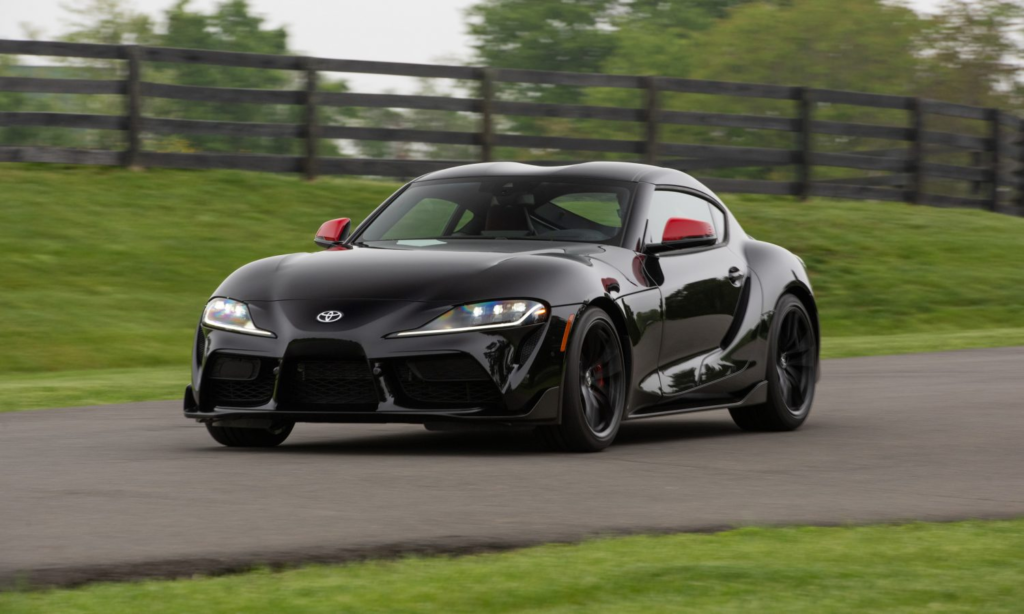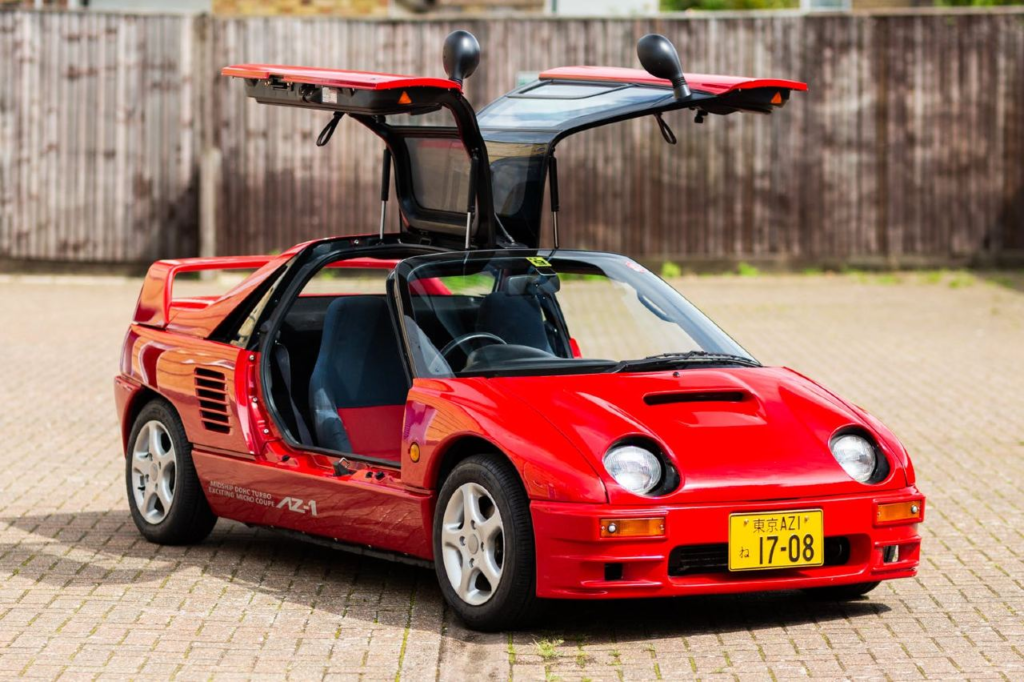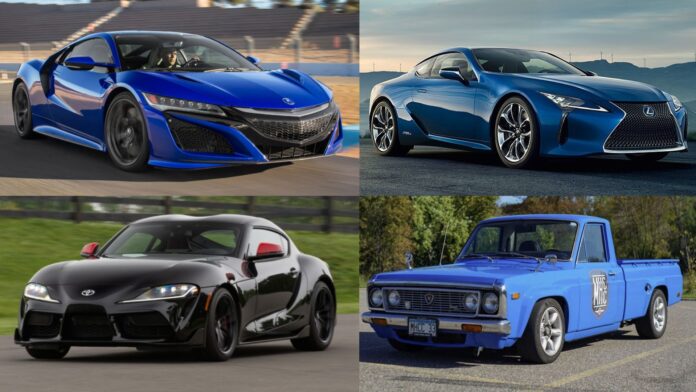Japan’s automotive industry is one of the world’s largest, and it is the birthplace of some of the world’s most distinctive and extraordinary cars. JDM cars are well-known and desired for their dependability, incredible designs, solid performance, and low cost. As a result, it’s not surprise that their popularity is skyrocketing. It’s also not surprising that the sector has several best-sellers to its name. Cars such as the limited-edition Mazda MX-5, Toyota Corolla, Toyota RAV4, Toyota Camry, and Honda Civic have all outperformed expectations.
| Flop JDM Cars | Price (USD) |
|---|---|
| 1999-2006 Honda Insight | $21,294-$34,719 |
| 2020 Toyota Supra | $50,920 |
| Mazda Eunos Cosmo | $100,000 |
| Infiniti Q70 | $51,300 |
| Subara SVX | $9,151 |
| Toyota Celica T230 | $9,240 |
| Mazda Rotary Pickup Truck | $25,000 to $35,000 |
| Autozam AZ-1 | $16,000 to $18,000 |
| 2018 Lexus LC | $73,000 to $85,000 |
| 2017 Acura NSX | $149,300 |
However, not every fantastic car from the Land of the Rising Sun makes its way to the bestseller list. Regardless of what they brought to the table in terms of pricing, they sold far less than the makers anticipated.
Here are the 10 coolest JDM cars that flopped, ranging from rare vintage to sophisticated modern cars and luxury cars.
Flop JDM Cars
1. 1999-2006 Honda Insight

The Honda Insight’s third and final iteration was launched in 2018 and went on to win the 2019 Green Car of the Year award. Despite being America’s first mass-produced hybrid vehicle and having excellent fuel economy, the first-generation Insight failed to meet expectations.
Perhaps it was the odd design, the garish cabin, or the low power and bad handling. Despite the tax breaks, however, only 17,020 units were sold internationally. This is somewhat disappointing given that Honda projected to sell 45,500 Insights during the 7-year generation.
2. 2020 Toyota Supra

The Supra, which was produced in four generations from 1978 to 2002, is without a doubt one of Toyota’s best sports cars. It was revived in 2019 after a 16-year sabbatical and manufactured in conjunction with BMW. With the largest of the two engines available, it could reach 60 mph in 3.8 seconds and complete the quarter-mile in 12.3 seconds.
Needless to say, this is one sports car that was well worth the wait. Despite its superb performance and large list of features, it failed to create the crucial showroom traffic required. Only 2,884 2020 Supras were sold in the United States.
3. Mazda Eunos Cosmo

The Eunos Cosmo was the third version of the Mazda Cosmo halo vehicle, introduced in 1990 and produced until 1995. The luxury grand tourer was Mazda’s flagship vehicle, and it was filled with technology that was well ahead of its time. It was the first mass-production vehicle to use a twin-turbocharged triple-rotor rotary engine with an integrated GPS navigation system.
It also came with a cell phone, a color touchscreen, a TV, radio, and a CD player. However, it was rather expensive, and buyers were taxed yearly for failing to comply with dimension regulations. When manufacture finished, just 8,875 were built.
4. Infiniti Q70

Since its inception as Nissan’s luxury brand in 1989, Infiniti has produced popular models such as the Q50, QX60, and QX50. The midsize Infiniti Q70 luxury vehicle, which was produced between 2013 and 2019, did not fare well on the market.
The Q70 was designed to compete with the BMW 5 Series, and it was smart, sumptuous, and equipped with a variety of strong engine options. Despite its elegance and advances, sales were disastrous due to consumers’ preference for SUVs and crossovers over sedans. Only 2,552 units were sold in its final model year.
5. Subara SVX

The Subaru SVX was built from the ground up in one generation between 1991 and 1996. Subaru’s first foray into the luxury market, which was dominated by European companies. Despite matching them in luxury and technology, it was sold at a far lower price than European competitors.
A 3.3-liter flat-6 engine sent 230 hp to the four wheels to improve driveability and stability. Despite its distinctive appearance, technological innovation, and massive discount, only roughly 14,257 units were sold in the United States. Subaru lost close to $75 million at the end of the production run.
6. Toyota Celica T230

The Toyota Celica was available in three different body styles from 1970 through 2006, spanning seven generations. Despite not being a best-seller, it lasted six generations until the launch of the T230 in 1999. The T230, which was based on the Toyota MC chassis, was only available as a three-door liftback coupe.
It was available in two well-equipped trim levels and sold more than 50,000 vehicles in its first model year. Sales dropped precipitously after that, owing to faulty engines, until 2005, when just 3,113 cars were sold.
7. Mazda Rotary Pickup Truck

The Rotary Pick up was the first Wankel-engined pickup truck, and it was sold solely in North America from 1974 to 1977. It had a lovely cabin and flared fenders, but under the hood was a four-port 1.3-liter smooth and powerful rotary engine. It was relatively fuel-efficient, with precision steering and robust brakes.
Whether it was due to the high cost or the risk of owning a rotary-engined truck, this groundbreaking pickup truck did not receive much attention. Sole roughly 15,000 units were produced during its brief run, and it remains the world’s only rotary-engined truck.
8. Autozam AZ-1

The Autozam AZ-1 (particularly the Type C) was favorably received by the public when it was first exhibited in three versions at the 1989 Tokyo Motor Show. However, it was the Type A with gullwing doors and a rear mid-mounted engine that was approved for manufacturing. Autozam aimed to sell 800 units each month of the beautiful small car, which was powered by a 63-hp turbocharged I-3 engine.
Unfortunately, it arrived during an economic downturn, and the $12,400 sticker price was deemed too high, as was the car’s tiny interior. Due to a failure to fulfill the sales objective, production was halted after one year, with many cars remaining unsold.
9. 2018 Lexus LC

The Lexus LC, which debuted in 2016 to replace the Lexus SC, was the first vehicle to ride on the TNGA: GAL platform. It is made of materials such as aluminum, carbon fiber, and high-strength steel and has a sleek and advanced design. A high-performance 5-liter V8 engine produces 471 horsepower and 398 lb-ft of torque under the hood of the regular LC.
While such stats appear to be impressive on the surface, they are woefully inadequate in a vehicle weighing more than 4,400 pounds. The LC was considerably too slow to compete with European competition, and as a result, sales fell.
10. 2017 Acura NSX

One of the most recognizable Japanese cars is the first generation NSX, which was unveiled in 1989 and featured a lightweight all-aluminum monocoque chassis. Everyone expected the second-generation NSX to be a hit like the first-generation cars when it debuted for the 2017 model year.
It is, as expected, a fantastic sports car driven by a twin-turbo V6 engine supported by three electric motors. It has 573 horsepower and 476 pound-feet of torque. However, it failed to meet expectations and was plagued by poor sales, which eventually led to its cancellation.


